Showing Spotlights 2177 - 2184 of 2779 in category All (newest first):
 One term you hear quite often in discussion about the potential risks of nanotechnology is 'precautionary principle'. This moral and political principle, as commonly defined, states that if an action or policy might cause severe or irreversible harm to the public or to the environment, in the absence of a scientific consensus that harm would not ensue, the burden of proof falls on those who would advocate taking the action. The principle aims to provide guidance for protecting public health and the environment in the face of uncertain risks, stating that the absence of full scientific certainty shall not be used as a reason to postpone measures where there is a risk of serious or irreversible harm to public health or the environment. In 2001, an expert panel commissioned by the European Environment Agency (EEA) published a report, Late Lessons from Early Warnings: The Precautionary Principle 1896-2000, which explored 14 case studies, all of which demonstrated how not heeding early warnings had led to a failure to protect human health and the environment. It looked at controversial topics such as asbestos, Mad Cow Disease, growth hormones, PCBs and radiation - all of which demonstrated how not heeding early warnings had led to a failure to protect human health and the environment. The expert group that compiled the EEA report identified 12 'late lessons' on how to avoid past mistakes as new technologies are developed. These lessons bear an uncanny resemblance to many of the concerns now being raised about various forms of nanotechnology.
One term you hear quite often in discussion about the potential risks of nanotechnology is 'precautionary principle'. This moral and political principle, as commonly defined, states that if an action or policy might cause severe or irreversible harm to the public or to the environment, in the absence of a scientific consensus that harm would not ensue, the burden of proof falls on those who would advocate taking the action. The principle aims to provide guidance for protecting public health and the environment in the face of uncertain risks, stating that the absence of full scientific certainty shall not be used as a reason to postpone measures where there is a risk of serious or irreversible harm to public health or the environment. In 2001, an expert panel commissioned by the European Environment Agency (EEA) published a report, Late Lessons from Early Warnings: The Precautionary Principle 1896-2000, which explored 14 case studies, all of which demonstrated how not heeding early warnings had led to a failure to protect human health and the environment. It looked at controversial topics such as asbestos, Mad Cow Disease, growth hormones, PCBs and radiation - all of which demonstrated how not heeding early warnings had led to a failure to protect human health and the environment. The expert group that compiled the EEA report identified 12 'late lessons' on how to avoid past mistakes as new technologies are developed. These lessons bear an uncanny resemblance to many of the concerns now being raised about various forms of nanotechnology.
Jul 22nd, 2008
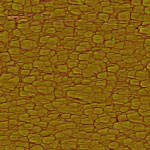 Modern medicine would be unthinkable without biomedical implants. The market for medical implant devices in the U.S. alone is estimated to be $23 billion per year and it is expected to grow by about 10% annually for the next few years. Implantable cardioverter defibrillators, cardiac resynchronization therapy devices, pacemakers, tissue and spinal orthopedic implants, hip replacements, phakic intraocular lenses and cosmetic implants will be among the top sellers. Current medical implants, such as orthopedic implants and heart valves, are made of titanium and stainless steel alloys, primarily because they are biocompatible. Unfortunately, a common complication associated with medical implants results from infectious biofilms which may cause chronic infection that is difficult to control. For instance, biofilms are present on the teeth as dental plaque, where they may become responsible for tooth decay and gum disease. Because teeth are easily accessible, removing plaque is not a problem. If biofilms develop on medical implants deep inside the body, though, they can become a serious, sometimes life-threatening problem. Preventing or limiting the formation of bacterial biofilm on the surface of implanted medical devices is an important approach to control bacterial biofilm-related infections. A new study demonstrates the effectiveness of a process combining surface nanocrystallization and thermal oxidation for reducing the biofilm's adherence to stainless steel.
Modern medicine would be unthinkable without biomedical implants. The market for medical implant devices in the U.S. alone is estimated to be $23 billion per year and it is expected to grow by about 10% annually for the next few years. Implantable cardioverter defibrillators, cardiac resynchronization therapy devices, pacemakers, tissue and spinal orthopedic implants, hip replacements, phakic intraocular lenses and cosmetic implants will be among the top sellers. Current medical implants, such as orthopedic implants and heart valves, are made of titanium and stainless steel alloys, primarily because they are biocompatible. Unfortunately, a common complication associated with medical implants results from infectious biofilms which may cause chronic infection that is difficult to control. For instance, biofilms are present on the teeth as dental plaque, where they may become responsible for tooth decay and gum disease. Because teeth are easily accessible, removing plaque is not a problem. If biofilms develop on medical implants deep inside the body, though, they can become a serious, sometimes life-threatening problem. Preventing or limiting the formation of bacterial biofilm on the surface of implanted medical devices is an important approach to control bacterial biofilm-related infections. A new study demonstrates the effectiveness of a process combining surface nanocrystallization and thermal oxidation for reducing the biofilm's adherence to stainless steel.
Jul 21st, 2008
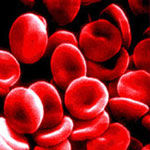 Any drug intended for systemic administration and all medical devices which will contact blood must undergo thorough biocompatibility testing. These tests include an in vitro assay to determine the material's potential to damage red blood cells (hemolysis). Hemolysis, the abnormal breakdown of red blood cells either in the blood vessels (intravascular hemolysis) or elsewhere in the body (extravascular), can lead to anemia or other pathological conditions. In the pharmaceutical industry, hematocompatibility testing is harmonized through the use of internationally recognized standard protocols. Nanotechnology- based medical devices and drug carriers are emerging as alternatives to conventional small-molecule drugs, and in vitro evaluation of their biocompatibility with blood components is a necessary part of early preclinical development. Many research papers have reported nanoparticle hemolytic properties but, so far, no in vitro hemolysis protocol has been available that is specific to nanoparticles. A new study published this month describes in vitro assays to study nanoparticle hemolytic properties, identifies nanoparticle interferences with these in vitro tests and provides the first comprehensive insight to potential sources of this interference, demonstrates the usefulness of including nanoparticle-only controls, and illustrates the importance of physicochemical characterization of nanoparticle formulations and visually monitoring test samples to avoid false-positive or false-negative results.
Any drug intended for systemic administration and all medical devices which will contact blood must undergo thorough biocompatibility testing. These tests include an in vitro assay to determine the material's potential to damage red blood cells (hemolysis). Hemolysis, the abnormal breakdown of red blood cells either in the blood vessels (intravascular hemolysis) or elsewhere in the body (extravascular), can lead to anemia or other pathological conditions. In the pharmaceutical industry, hematocompatibility testing is harmonized through the use of internationally recognized standard protocols. Nanotechnology- based medical devices and drug carriers are emerging as alternatives to conventional small-molecule drugs, and in vitro evaluation of their biocompatibility with blood components is a necessary part of early preclinical development. Many research papers have reported nanoparticle hemolytic properties but, so far, no in vitro hemolysis protocol has been available that is specific to nanoparticles. A new study published this month describes in vitro assays to study nanoparticle hemolytic properties, identifies nanoparticle interferences with these in vitro tests and provides the first comprehensive insight to potential sources of this interference, demonstrates the usefulness of including nanoparticle-only controls, and illustrates the importance of physicochemical characterization of nanoparticle formulations and visually monitoring test samples to avoid false-positive or false-negative results.
Jul 18th, 2008
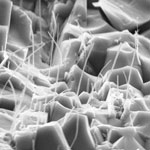 Having come a long way from pottery and tableware, modern advanced ceramics are high-performance materials that find use in things such as bio-medical implants, jet engine turbine blades, superconductors, missile nose cones, scratch-proof watches, or the heat protection tiles used on the Space Shuttle. Super-tough and ultra-high temperature resistant materials are in critical need for applications under extreme conditions such as jet engines, power turbines, catalytic heat exchangers, military armors, aircrafts, and spacecrafts. Structural ceramics have largely failed to fulfill their promise of revolutionizing engines with strong materials that withstand very high temperature. The major problem with the use of ceramics as structural materials is their brittleness. Although many attempts have been made to increase their toughness, including incorporation of fibers and particles, currently available ceramics and their composites are still not as tough as metals and polymers. The brittleness of ceramic materials has not yet been overcome and it has proven difficult to solve this problem by conventional material engineering approaches. The extraordinary mechanical properties of carbon nanotubes (CNTs) have generated strong research interest in their possible use in reinforced composite materials because incorporating CNTs into a ceramic matrix might be expected to produce tough as well as highly stiff and thermostable ceramic composites.
Having come a long way from pottery and tableware, modern advanced ceramics are high-performance materials that find use in things such as bio-medical implants, jet engine turbine blades, superconductors, missile nose cones, scratch-proof watches, or the heat protection tiles used on the Space Shuttle. Super-tough and ultra-high temperature resistant materials are in critical need for applications under extreme conditions such as jet engines, power turbines, catalytic heat exchangers, military armors, aircrafts, and spacecrafts. Structural ceramics have largely failed to fulfill their promise of revolutionizing engines with strong materials that withstand very high temperature. The major problem with the use of ceramics as structural materials is their brittleness. Although many attempts have been made to increase their toughness, including incorporation of fibers and particles, currently available ceramics and their composites are still not as tough as metals and polymers. The brittleness of ceramic materials has not yet been overcome and it has proven difficult to solve this problem by conventional material engineering approaches. The extraordinary mechanical properties of carbon nanotubes (CNTs) have generated strong research interest in their possible use in reinforced composite materials because incorporating CNTs into a ceramic matrix might be expected to produce tough as well as highly stiff and thermostable ceramic composites.
Jul 17th, 2008
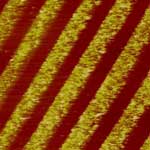 The use of spontaneous self-assembly as a lithography- and external field-free means to construct well-ordered, often intriguing structures has received much attention for its ease of organizing materials on the nanoscale into ordered structures and producing complex, large-scale structures with small feature sizes. These self-organized structures promise new opportunities for developing miniaturized optical, electronic, optoelectronic, and magnetic devices. An extremely simple route to intriguing structures is the evaporation-induced self-assembly of polymers and nanoparticles from a droplet on a solid substrate. However, flow instabilities within the evaporating droplet often result in non-equilibrium and irregular dissipative structures, e.g., randomly organized convection patterns, stochastically distributed multi-rings, etc. Therefore, fully utilizing evaporation as a simple tool for creating well-ordered structures with numerous technological applications requires precise control over several factors, including evaporative flux, solution concentration, and the interfacial interaction between solute and substrate.
The use of spontaneous self-assembly as a lithography- and external field-free means to construct well-ordered, often intriguing structures has received much attention for its ease of organizing materials on the nanoscale into ordered structures and producing complex, large-scale structures with small feature sizes. These self-organized structures promise new opportunities for developing miniaturized optical, electronic, optoelectronic, and magnetic devices. An extremely simple route to intriguing structures is the evaporation-induced self-assembly of polymers and nanoparticles from a droplet on a solid substrate. However, flow instabilities within the evaporating droplet often result in non-equilibrium and irregular dissipative structures, e.g., randomly organized convection patterns, stochastically distributed multi-rings, etc. Therefore, fully utilizing evaporation as a simple tool for creating well-ordered structures with numerous technological applications requires precise control over several factors, including evaporative flux, solution concentration, and the interfacial interaction between solute and substrate.
Jul 16th, 2008
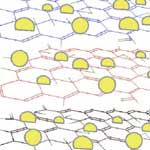 The electrical properties of graphene have been the topic of recent interest from various disciplines because this novel carbon material offers exciting opportunities to develop nanocomposites with unusual electronic catalytic properties. Most of these studies involve mechanical peeling of individual graphene sheets - one at a time - from a block of graphite. The requirement to obtain graphene as individual sheets and to maintain it in the reduced form introduces a certain level of complexity into the process of designing composite systems where, for instance, semiconductor or metal nanoparticle are anchored on graphene sheets. Without some form of intervention, the strong van der Waals interactions between reduced graphene sheets would cause them to collapse and aggregate. Researchers have now developed a simple photocatalytic method to anchor semiconductor nanoparticles on a single sheet of graphene using a solution-based process.
The electrical properties of graphene have been the topic of recent interest from various disciplines because this novel carbon material offers exciting opportunities to develop nanocomposites with unusual electronic catalytic properties. Most of these studies involve mechanical peeling of individual graphene sheets - one at a time - from a block of graphite. The requirement to obtain graphene as individual sheets and to maintain it in the reduced form introduces a certain level of complexity into the process of designing composite systems where, for instance, semiconductor or metal nanoparticle are anchored on graphene sheets. Without some form of intervention, the strong van der Waals interactions between reduced graphene sheets would cause them to collapse and aggregate. Researchers have now developed a simple photocatalytic method to anchor semiconductor nanoparticles on a single sheet of graphene using a solution-based process.
Jul 15th, 2008
 Electrometers are instruments that measure electric charge or electrical potential difference by means of electrostatic force. While early electrometers such as developed by Lord Kelvin in the 19th century were crude instruments, modern electrometers based on solid state technology are high-precision electronic devices that, in extreme cases, are so sensitive they can count individual electrons as they pass through a circuit. As the dimensions of electronic devices shrink further, the probes required to measure the voltage inside a miniature conductor have to be miniaturized, too. An alligator clip cannot be scaled down indefinitely to perform such tasks. Furthermore, as devices reach the nanoscale, the perturbation of the measurement on the device itself cannot be neglected and must be assessed. A few techniques, many of which are based on scanning a small object such as an atomic force microscope (AFM) tip, have been developed in the past to address this challenge. Each technique has its pros and cons.
Electrometers are instruments that measure electric charge or electrical potential difference by means of electrostatic force. While early electrometers such as developed by Lord Kelvin in the 19th century were crude instruments, modern electrometers based on solid state technology are high-precision electronic devices that, in extreme cases, are so sensitive they can count individual electrons as they pass through a circuit. As the dimensions of electronic devices shrink further, the probes required to measure the voltage inside a miniature conductor have to be miniaturized, too. An alligator clip cannot be scaled down indefinitely to perform such tasks. Furthermore, as devices reach the nanoscale, the perturbation of the measurement on the device itself cannot be neglected and must be assessed. A few techniques, many of which are based on scanning a small object such as an atomic force microscope (AFM) tip, have been developed in the past to address this challenge. Each technique has its pros and cons.
Jul 14th, 2008
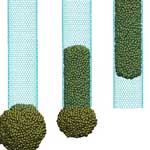 Various techniques are being developed to enhance the already impressive properties of carbon nanotubes (CNTs) further by combining them with other materials. We have covered plenty of examples in our Spotlights. For instance, encapsulating carbon nanofibers with CNTs transforms cheap commercial carbon nanotubes into highly efficient carbon for electrochemical energy storage applications. Another study demonstrated that the redox properties of iron and iron oxide particles are tunable via encapsulation within CNTs, suggesting that a host-guest interaction between the confined metal particles and CNTs, which is different from that on the outside of the nanotubes. Researchers are still busy trying to understand some of the CNT basics, for instance something as fundamental as 'how do nanotubes grow'? How can their various properties - electronic, transport, or mechanical - be modified? Or how can you make use of CNT's structure and properties to build novel nanotools. A new model demonstrates that sufficiently small liquid metal droplets can be drawn inside a CNT via capillary action.
Various techniques are being developed to enhance the already impressive properties of carbon nanotubes (CNTs) further by combining them with other materials. We have covered plenty of examples in our Spotlights. For instance, encapsulating carbon nanofibers with CNTs transforms cheap commercial carbon nanotubes into highly efficient carbon for electrochemical energy storage applications. Another study demonstrated that the redox properties of iron and iron oxide particles are tunable via encapsulation within CNTs, suggesting that a host-guest interaction between the confined metal particles and CNTs, which is different from that on the outside of the nanotubes. Researchers are still busy trying to understand some of the CNT basics, for instance something as fundamental as 'how do nanotubes grow'? How can their various properties - electronic, transport, or mechanical - be modified? Or how can you make use of CNT's structure and properties to build novel nanotools. A new model demonstrates that sufficiently small liquid metal droplets can be drawn inside a CNT via capillary action.
Jul 11th, 2008
 One term you hear quite often in discussion about the potential risks of nanotechnology is 'precautionary principle'. This moral and political principle, as commonly defined, states that if an action or policy might cause severe or irreversible harm to the public or to the environment, in the absence of a scientific consensus that harm would not ensue, the burden of proof falls on those who would advocate taking the action. The principle aims to provide guidance for protecting public health and the environment in the face of uncertain risks, stating that the absence of full scientific certainty shall not be used as a reason to postpone measures where there is a risk of serious or irreversible harm to public health or the environment. In 2001, an expert panel commissioned by the European Environment Agency (EEA) published a report, Late Lessons from Early Warnings: The Precautionary Principle 1896-2000, which explored 14 case studies, all of which demonstrated how not heeding early warnings had led to a failure to protect human health and the environment. It looked at controversial topics such as asbestos, Mad Cow Disease, growth hormones, PCBs and radiation - all of which demonstrated how not heeding early warnings had led to a failure to protect human health and the environment. The expert group that compiled the EEA report identified 12 'late lessons' on how to avoid past mistakes as new technologies are developed. These lessons bear an uncanny resemblance to many of the concerns now being raised about various forms of nanotechnology.
One term you hear quite often in discussion about the potential risks of nanotechnology is 'precautionary principle'. This moral and political principle, as commonly defined, states that if an action or policy might cause severe or irreversible harm to the public or to the environment, in the absence of a scientific consensus that harm would not ensue, the burden of proof falls on those who would advocate taking the action. The principle aims to provide guidance for protecting public health and the environment in the face of uncertain risks, stating that the absence of full scientific certainty shall not be used as a reason to postpone measures where there is a risk of serious or irreversible harm to public health or the environment. In 2001, an expert panel commissioned by the European Environment Agency (EEA) published a report, Late Lessons from Early Warnings: The Precautionary Principle 1896-2000, which explored 14 case studies, all of which demonstrated how not heeding early warnings had led to a failure to protect human health and the environment. It looked at controversial topics such as asbestos, Mad Cow Disease, growth hormones, PCBs and radiation - all of which demonstrated how not heeding early warnings had led to a failure to protect human health and the environment. The expert group that compiled the EEA report identified 12 'late lessons' on how to avoid past mistakes as new technologies are developed. These lessons bear an uncanny resemblance to many of the concerns now being raised about various forms of nanotechnology.
 Subscribe to our Nanotechnology Spotlight feed
Subscribe to our Nanotechnology Spotlight feed





